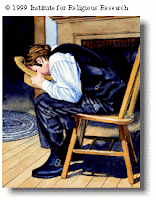: a small religious group that is not part of a larger and more accepted religion and that has beliefs regarded by many people as extreme or dangerous
The problem with the qualification of “accepted” and “large” is that at some point, all major world religions were small and unaccepted. To the Romans and Jews of the 1st century, Christianity was a small, upstart cult. But now because of the billions of adherents (in some form or another) it is accepted as a legitimate religion. The reason I don’t like this is that it relies on the “might makes right” principle, or strength in numbers (known as Agumentum ad populum).
Another definition that I found that probably adds to the definition to make it clearer:
A group that uses manipulative psychological “mind control” techniques to recruit and control their members. These techniques might be “love bombing”, instant friends or emotional blackmail. At extremes it might include keeping people away from their friends and family and isolating them both physically and emotionally.
Sometimes we hear the terms “mind control” and “brainwashing” used interchangeably, but there are a few differences. Mainly, brainwashing is done coercively by someone perceived as an enemy using threats of personal and familial safety. The victim experiences “thought reform” as a survival mechanism. Kidnapping victims like Elizabeth Smart and Jaycee Dugard experienced this, commonly called Stockholm Syndrome.
Meanwhile, “mind control” is a little different. It is more subtle, and done by people who are considered to be trusted friends. Sometimes the people doing it don’t even realize that they are doing it. The process is slower and seen as a positive thing.
Mind control techniques can be summed up with something called the BITE model, created by Steven Alan Hassan. It stands for: Behavior control, Information control, Thought control, Emotional control.
With Behavior control, they:
• Say what clothes to wear: clothing that covers garments
• Say how many piercings and tattoos are appropriate
• Say what to eat and drink: Word of Wisdom
• Regulate time: between 3 hours of church, FHE, Mutual, callings, Temple Trips, Elders Quorum/Relief Society activities, firesides, and other meetings, the average LDS person probably spends upwards of 20 hours a week doing church activities.
• Demand perfection and/or obedience: This quote from Marion G Romney, taken from General Conference in October 1960: “Standing by me, [Heber J. Grant] put his arm over my shoulder and said: ‘My boy, you always keep your eye on the president of the church and if he ever tells you to do anything, and it is wrong, and you do it, the Lord will bless you for it.’ Then with a twinkle in his eye, he said, ‘But you don't need to worry. The Lord will never let his mouthpiece lead the people astray.’”
• Have bizarre rituals/ordinances: Temple ordinances, though some of the bizarreness was dropped in 1990, and still others later in 2005.
• Have a financial obligation: Tithing
• Want members to have a dependence on group
With Information control, they:
• Deliberately withhold information: Until last month, the LDS Church never admitted to Joseph Smith using a rock put into his hat to "translate" the Book of Mormon, and instead promoted the idea that it was translated directly from the plates.
• Minimize or discourage access to non-church sources of information: Telling members to not look at “anti-mormon” literature, or only trust internet searches from lds.org.
• Whitewashing history or disturbing facts: Quote from Boyd K. Packer: There is a temptation for the writer or the teacher of Church history to want to tell everything, whether it is worthy or faith promoting or not. Some things that are true are not very useful. (from “The Mantle is Far, Far Greater than the Intellect”)
• Encourage spying on other members: Home Teaching and Visiting Teaching. In the LDS church, this is probably more benign than in other groups. But it is stated that the bishop is able to keep tabs on the needs of the ward through HT/VT, but also to know if everyone is reading scriptures, praying, etc.
• Extensive use of church-generated information and propaganda: The Ensign/New Era/Friend, Church News, books from Deseret Book.
• Distort information to make it more acceptable: Usually called “milk before meat,” or “line upon line.” It’s like signing a contract without knowing all the details because if you knew all the details you’d run.
• Downplay the past leaders’ mishaps (Joseph Smith’s polygamy/polyandry, the fact that he had a gun and killed 2 people before he was shot, destroying a printing press that was accusing him of polygamy)
• Insist that any information that casts a negative light on the church is taken out of context or that it is an outright lie.
With Thought control, they:
• Require members to internalize the group’s doctrine as truth, instill black and white thinking, and an “us vs. them” or “insiders vs. outsiders” mentality.
• Use loaded language and clichés which constrict knowledge and stop critical thoughts: Anytime they are confronted, LDS members are told to bear testimony or sing a hymn.
• Instilling the idea that they are the only ones who have the truth, a.k.a. the “one and only true church”
• Teaching thought-stopping techniques which shut down reality testing by stopping negative thoughts and allowing only positive thoughts: “Contention is of the devil.” This shuts down debates that might lead to the member thinking about an outsider’s point of view.
• Forbid critical questions about leader, doctrine, or policy. Doubts are turned around on the member and their devotion or worthiness to the group is questioned.
• Tell members to go to leaders for answers to questions, not outside sources.
With Emotional control, they:
• They use guilt and fear heavily to make one afraid to question or leave the group. They will also use the threat of losing one’s family: The LDS church promotes the idea of a “forever family,” but only if everyone is a faithful member.
• They teach that good feelings are from god, and that they are the ultimate source of truth.
• Phobia indoctrination, including inculcating irrational fears about leaving the group or questioning the leader’s authority. No happiness or fulfillment possible outside of the group and terrible consequences if you leave. Here's an example of this kind of phobia indoctrination from David Bednar.
• Shunning of those who leave; fear of being rejected by friends, peers, and family
• Teach that those who leave were offended, or couldn’t live the standards, and that there’s no legitimate reason to leave the organization. The organization often uses character assassinations on those who left so as to discredit any information they might spread around.
• Ritualistic and sometimes public confession of sins: Bishops’ interviews of teenagers where they ask about masturbation and other “sins” of a sexual nature to instill guilt into them.
• Love-bombing: When someone is about to join or starting to waver in their devotion, the members rally around the person to shower them with social interaction, kindness, gifts of food, notes that they are missed, etc.
• The double-bind: They ask prospective members to read/pray and see if they get the good feeling. If they don’t, they tell the person that they must be doing something wrong. There is only one “correct” answer.
The BITE model mentions several other things that don’t apply to the LDS church, but most of them do. (visit the above link for the full list)
My personal thought is that it is probably the most mainstream cult in existence, and that it straddles the line dividing church from cult. They display many of the attributes, but none to the severe outward extent that we often think of cults having. Reprisals aren't so overt as threats to life and limb as with many Muslim groups, or threats of lawsuit to recover money as with Scientology, or overt shunning as with Jehovah’s Witnesses. It's still very real though. Shunning can still happen by devout family members, but the church disavows an official policy. They in fact state that they do the opposite but it seldom works that way in reality. Mormons are subtly trained from infancy to use sort of a passive-aggressive approach to disciplining each other, sort of a stealth disapproval if someone gets out of line. It's part of the "worthiness fetish." They are a purity cult.
It's certainly not a destructive/dangerous cult like the Branch Dividians or an Islamic jihadist group. They are a Christian denomination, and they do some good in the community. But they most definitely exhibit a lot of the traits that cults have.
(written by Joseph)












